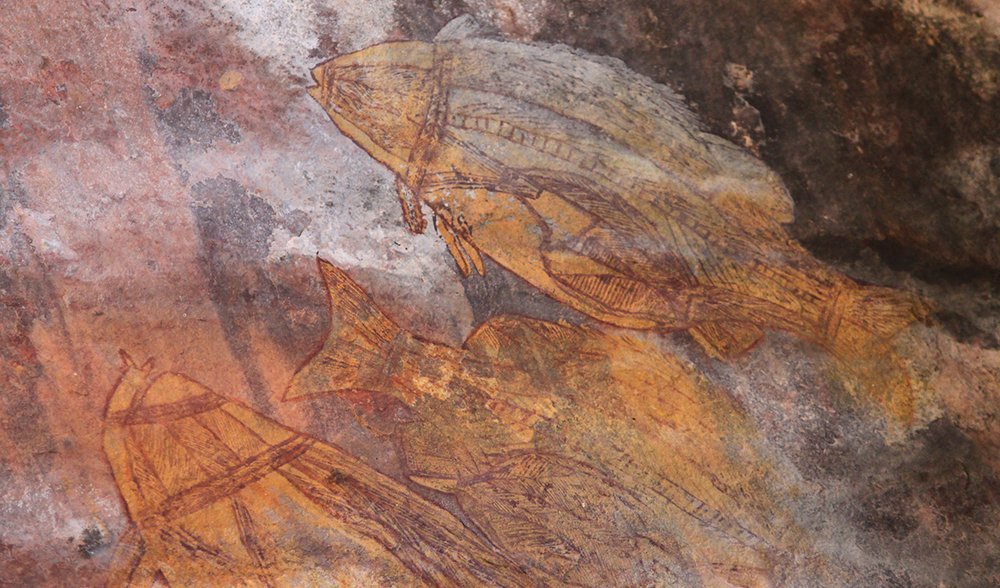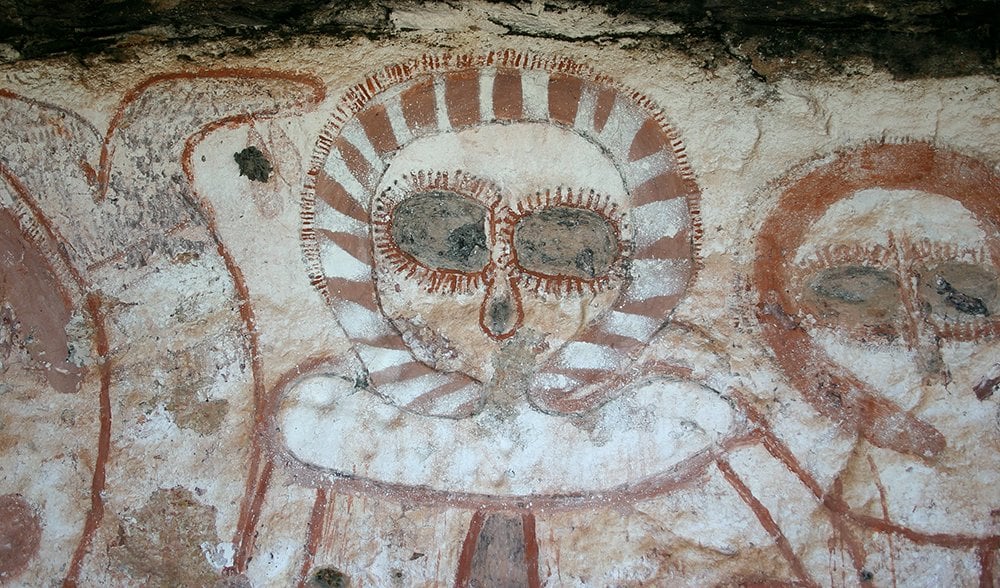Australia’s top 7 Aboriginal rock art sites

1. Quinkan Country, QLD
There are several collections of rock art in Quinkan Country that are at least 15,000 years old, including paintings of wildlife, spirits and people. The sites can be reached via several walks; the Quinkan and Regional Cultural Centre in Laura, 210km north-west of Cairns, gives guided tours from late March until early December.
READ MORE:
2. Burrup Peninsula, Pilbara, WA
Also known as Murujuga, Burrup, 190km west of Port Hedland, contains one of the world’s largest collections of rock carvings, or petroglyphs, which are up to 20,000 years old. The site is one of the World Monuments Fund’s 100 Most Endangered Places in the World.
READ MORE:

The Tasmanian tiger etched in this stone has been extinct across Australia’s mainland for millennia. It’s found on the islands of Murujuga Sea Country in the Dampier Archipelago. (Image: Nick Rains/Australian Geographic)
3. Kakadu National Park, NT
Ubirr is a cluster of rocky outcrops near Kakadu’s East Alligator River. It contains three major art sites. The main gallery features some of the best examples of ‘X-ray art’ – a style that shows internal skeletons – and depicts Mimi spirits, barramundi, goannas and turtles.
READ MORE:

Rock art at Ubirr in Kakadu NP. (Image: Luke Durkin/Wikimedia)
4. The Grampians National Park, VIC
There are four sites open to the public in the Grampians National Park, but the most significant, Bunjil Shelter, lies just east of the park, in the Gariwerd area. The artwork here features a depiction of Bunjil, benevolent creator, and his two dingoes.
READ MORE:
5. Preminghana, TAS
Preminghana is an Indigenous Protection Area managed by the Tasmanian Aboriginal Land and Sea Council, from which it is necessary to obtain permission to visit these sites. Its engravings are at least 1500 years old, taking the form of carved abstract designs and patterns.
6. Ku-ring-gai Chase National Park, NSW
There are a number of rock-art sites on the Lambert Peninsula, including several examples of large rock engravings with simple designs that are unique to the greater Sydney area, and are up to 5000 years old. The park is along the southern banks of the Hawkesbury River, 25km north of Sydney’s CBD.
READ MORE:
- Weekend escape: Ku-Ring-Gai Chase National Park
7. The Kimberley, WA
The Kimberley region is home to some of the oldest and most prolific collections of rock art in the world, dating back tens of thousands of years. The region is known for Wandjina-style rock art, found predominately in the northwestern and central areas of the Kimberley with rock art representing spirit ancestors with human characteristics. Another style of art found in the region is called Gwion and is best recognised by elongated figures, often painted wearing elaborate dress and featuring boomerangs, spears and ornaments.
READ MORE:

Images of Wanjina, shown here at Donkey Ridge in the north-western Kimberley region of WA, are characterised by halo-like headdresses, mouthless faces, and large, round eyes. (Image Grahame Walsh / courtesy Kimberley Foundation Australia)
Join us at the AG Society Aboriginal Art Air Tour
In April 2017 the AG Society will partner with Bill Peach Journeys for a special adventure by small aircraft to some of Australia’s most remote Aboriginal communities and spectacular rock-art locations. Find out more.




